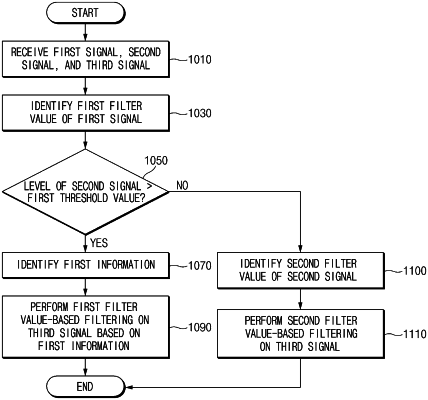| CPC G10L 21/0232 (2013.01) [G10L 25/84 (2013.01); G10L 2025/783 (2013.01)] | 8 Claims |

|
1. An electronic device comprising:
an input device;
a processor; and
a memory operatively connected to the input device and the processor,
wherein the memory stores instructions that, when executed, cause the processor to:
identify a first filter value of a first signal received from the input device;
receive a second signal after a first time elapses after the first signal is received, from the input device;
receive a third signal after a second time elapses after the second signal is received, from the input device;
identify a probability of a voice presence from the second signal;
based on the identified probability being lower than a second threshold value, compare a level, which indicates an intensity of the second signal, of the second signal with a first threshold value for each of at least one unit section of the second signal;
identify first information indicating that abnormal noise is present in a first section of the second signal, based on a level of a portion of the second signal, corresponding to the first section including the at least one unit section, being greater than the first threshold value and the identified probability being lower than the second threshold value;
perform filtering on the third signal based on the first filter value of the first signal according to the first information, and
based on the identified probability being equal to or greater than the second threshold value or the level of the second signal being lower than the first threshold value, perform filtering on the third signal based on a second filter value for noise suppression of the second signal.
|